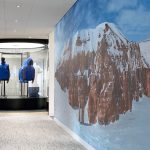Quiksilver Inc. saw its wholesale business decline 30 percent in North American and 32 percent in Europe in the fiscal third quarter ended July 31, 2014 as senior management focused on cleaning up distribution of Quiksilver, DC and Roxy branded products ahead of a spring 2015 global product launch that will mark a major test of their turnaround strategy.
The decline also reflected the company’s decision to license its brands in peripheral categories such as children’s apparel in its quest to focus its cash and purchasing power as well as a shift to a global brand management model that resulted in late deliveries to retailers in the EMEA region.
The actions sports company reported net revenues of $396 million, down $96 million, or 19 percent, in currency-neutral (c-n) terms from the fiscal third quarter of 2013.
In the Americas, net revenues fell by $68, or 26 percent c-n, to $191 million. DC contributed $47 million of the decrease, Quiksilver $14 million, and Roxy $7 million. At DC, the decline was driven by lower sales to the clearance channel, where sales to key players were done $10 million thanks to cleaner inventories. DC sales to mid-tier family retailers were off $15 million reflecting the decision to trim distribution. Finally, sales of DC Kids fell $5 million as that business began to transition to licensees.
Nyjah Vulc dissappoints, Trace on deck
ZQK President and CEO Andy Mooney said sales of DC’s $85 Nyjah Vulc canvas skate shoe fell short of expectations, but that orders for the $45 Trace, which will hit retail stores in Spring 2015, have exceeded half a million pairs, making it the most successful product launch in DC history.
“It’s completely in the sweet spot of volume potential,” Mooney said of the Trace, which will mark DC’s new entry level shoe. “So that’s really why were much more optimistic about the Trace than the Nyjah Vulc.”
The Trace aligns with one of Mooney’s core strategies for turning around all of ZQK’s brands as well as their dealers.
“We believe well come through the season with higher velocity of sell-through by being price right going in at the front end of the season, reduced end season markdowns, and reduced end of season returns,” Mooney explained. “And our objective is to net out at the end of the season with higher margins than we historically have been able to do.”
At Quiksilver, licensing of children’s apparel reduced Wholesale revenues in the Americas by $6 million, while department store revenue declined by $3 million and sales to smaller, independent retailers fell $5 million. Roxy saw sales drop about $2 million in both the clearance and larger department store channels and $3 million in the independent retailer channel.
Global demand planning glitch
In EMEA, net revenues decreased $30 million, or 16 percent c-n, to $143 million. Sales declined $15 million at Quiksilver, $7 million at Roxy and $10 million at DC. The wholesale order book for fall 2014 was down 12 percent, driven largely by reduced Quiksilver and Roxy preorders, but also as a result of slower prior season sell-through. The transition to global demand planning also led to late shipments, particularly in Europe, causing some sales to fall into the current quarter.
“It took us longer than we expected in the transition from regional demand planning to global demand planning to aggregate the global orders and place them at the factories,” Mooney explained.
APAC net revenues decreased 2 percent to $62 million from $63 million, but were up 1 percent c-n. Emerging markets generated net revenue growth of 10 percent in constant currency. Revenues from Brazil, Russia Indonesia, China and Mexico were up 24 percent for the quarter and 29 percent for the year ended July 31, respectively.
“We believe these countries can continue to grow at double-digit rates in 2015, and were particularly optimistic about growth in Brazil where we will begin to franchise retail concepts in 2015,” said Mooney. “And finally, we believe we will soon be able to unlock the potential of the Roxy and Quiksilver brands in China, the second-largest action sports market in the world.
By brand, Quiksilver global revenues decreased $30 million, or 17 percent c-n, to $143 million; Roxy decreased $12 million, or 9 percent c-n, to $119 million; and DC decreased $57 million, or 34 percent c-n, to $109 million. Overall Wholesale revenues decreased 30 percent c-n to $235 million.
Retail revenues increased 1 percent c-n to $123 million and are on track to reach 27 percent of ZQK sales this year. Same-store sales in company-owned retail stores improved 2 percent in the Americas, marking the fifth consecutive quarter of positive comps in the region. ZQK owned 658 stores at the end of the quarter compared with 632 a year earlier and is on pace to open 60 net new stores in 2014. E-commerce revenues grew 10 percent c-n to $35 million.
Gross margin shank 130 basis points to 47.8 percent as increased discounting in the wholesale channels was partially offset by sales growth in the company’s higher-margin direct-to-consumer and licensing channels. CFO Richard Shields explained that late shipments forced ZQK to offer European retailers discounts that dragged down gross margins by 280 basis points.
$182 Million asset impairment charge
SG&A expenses decreased $2 million to $213 million, but spiked to 53.8 percent of revenues, up 980 basis points from a year earlier. The biggest hit to earnings came from a non-cash charge of $182 million to write-off the carrying value of goodwill attributable to the companys EMEA reporting segment. Net loss from continuing operations attributable to ZQK was -$220 million, or -$1.29 per share, versus income from continuing operations of $200,000, or $0.00 per diluted share.
Pro-forma Adjusted EBITDA decreased to zero from $53 million. Pro-forma loss from continuing operations attributable to ZQK, which excludes the after-tax impact of restructuring and other special charges, non-cash asset impairments and non-cash interest charges, was $35 million, or 20 cents per share, versus pro-forma income from continuing operations of $13 million, or 7 cents per diluted share.
ZQK burned through $8 million in cash during the quarter, ending the period with $107.9 million in cash and cash equivalents, which was down 77.1 percent from a year earlier.
Ramping up for Spring 2015
ZQK spent the summer restructuring its wholesale sales force in anticipation of its Spring 2015 launch, which will be the first implementation of its new global branding model. The company has created special sales teams in each region to focus on either core independent specialty retailers or key accounts, such as Macy’s in the United States, Sport Chek in Canada and Decathlon in Europe. A large number of small independent retailers have been moved to a B2B service model.
Mooney said product deliveries are improving and that he is confident fulfillment rates will improve dramatically come Spring 2015.
“Were very confident that not only will we deliver the order book in full and on time for spring but we will deliver it earlier in the season than weve ever done historically,” he said.
To ensure the success of its Spring 2015 launch, ZQK will boost its spending on marketing by 50 percent next spring. The launch will mark the first time, Quicksilver, DC and Roxy will launch lines designed at the company’s two global design centers. The launch will be particularly important for DC, which saw sales to the teen specialty channel decline by $10 million in the third quarter. Executives said they think they can reverse that trend with the Trace as well as SMU programs for key accounts.
To encourage loyalty, ZQK recently told its dealers it would significantly scale back price promotions in its own branded e-commerce sites.
ZQK anticipates DC brand revenues in North America and Europe being down single digits in the spring. The decline in Quiksilver and Roxy revenues is expected to slow to the high-single-digit range.
Mooney foresees continued modest declines in the number of independent specialty doors, but growing sales to healthy core retailers, sporting goods accounts and online retailers such as Amazon and Surfdome, which are increasing their focus on board sports.














